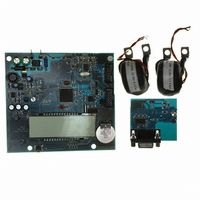STEVAL-IPE009V1 STMicroelectronics, STEVAL-IPE009V1 Datasheet - Page 38

STEVAL-IPE009V1
Manufacturer Part Number
STEVAL-IPE009V1
Description
BOARD EVAL ST72321BR9/STPM14
Manufacturer
STMicroelectronics
Type
Other Power Managementr
Specifications of STEVAL-IPE009V1
Main Purpose
Power Management, Energy/Power Meter
Embedded
Yes, MCU, 8-Bit
Utilized Ic / Part
STPM14, ST72F321BR9T6
Primary Attributes
1-Ph 220 VAC, LCD Displays: No-Load, Reverse, Fraud, or Case Tampering
Secondary Attributes
Up to 4 Tariff Rates, Data Accumulated for Meter Life, Time Stamp for: Tamper, Fraud, Power Failure
Input Voltage
220 V
Product
Power Management Modules
Silicon Manufacturer
ST Micro
Silicon Core Number
ST72321BR9 And STPM14
Features
Continuously Detects, Displays No-Load Condition, Reverse Direction, Fraud And Case Tamper Condition
Lead Free Status / RoHS Status
Lead free / RoHS Compliant
For Use With/related Products
STPM14, ST72321BR9
Other names
497-8434
STEVAL-IPE009V1
STEVAL-IPE009V1
STPM1x calibration
Table 19.
38/46
Value of Calibrator
Frequency at LED
Voltage divider
Voltage divider resistor
Description
within Kp = Kv*Ki = (0.75*0.75)=56.25% and 100%, and Cv=Ci=128 gives a correction
factor of Kp= (0.875*0.875) = 76.5625%.
Each calibrator value can be changed from a binary form to a decimal correction form, using
the following formula:
Kv=(Cv/128)*0.125 + 0.75 and the same for Ki.
Let us choose as initial value Ai=32
Calibration results
From the target power constant C
which are applied to the meter under calibration, the error of power measurement can be
calculated:
Equation 21
err = 100(fx/f -1) [%], where fx is the real frequency read at LED output.
Now, a final unit less power reduction factor can be calculated:
Equation 22
p
This final power reduction factor can be considered as a product of voltage and current
reduction factors which are produced from corresponding calibration constants. So, an
obvious solution to obtain the voltage and current reduction factors is to calculate a common
reduction factor as a square root of pF. This result must fall within the indicated range,
otherwise the device cannot be calibrated:
768 ≤ R = 1024 pF + 0.125 < 1024
In order to obtain the corresponding calibration constants, the reduction factor must be
transformed:
CV = CC = R - 768
By using separately the integer and the fractional part of the common reduction a better fit of
calibration constants can be produced. Simply, let's set one of the two calibration registers
(e.g. CV) to the lowest integer value of R, while the other (CC) should be set to the nearest
integer value of R. Examples:
R-768=128.124; in this case set CV=128; set CC=128
R-768=127.755; while in this other one set CV=127; set CC=128.
F
= (p
D
- err)/100
Kp = Kv*Ki = 0.765625
f = P*In*Vn/3600000 = 40.8889 Hz
Sv = (F*DL*Vbg
R1=R2*(1000/Sv-1)
2
Doc ID 13167 Rev 7
)/(fM*Vn*In*Gv*Gi*Kp*Ai*Av*Si)= 0,6324mV/V
P
of the meter and the actual values of V
Value
STPM11, STPM12, STPM13, STPM14
RMS
and I
RMS
,




















